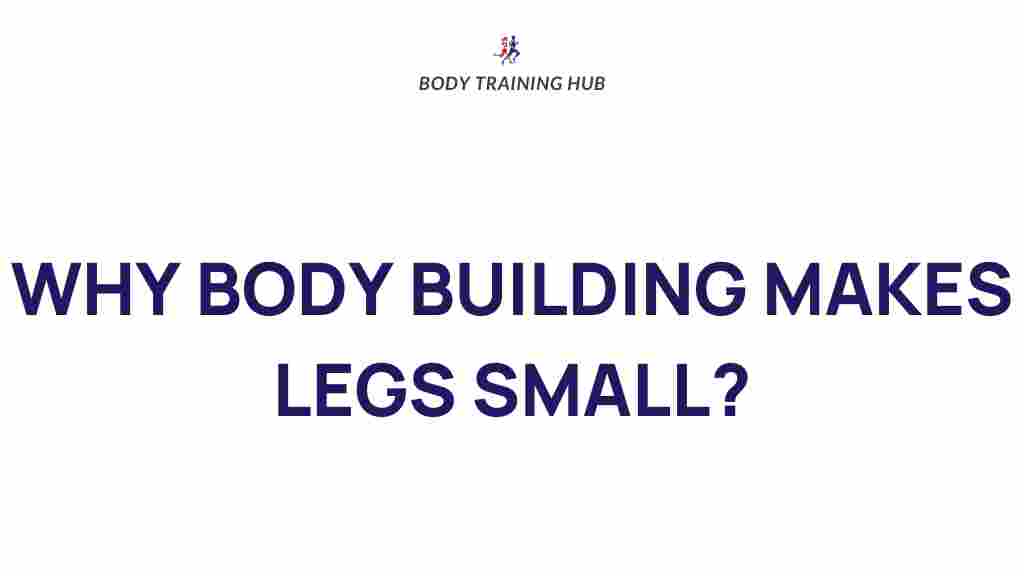Unraveling the Mystery of Shrinking Legs in Bodybuilding
Bodybuilding is a pursuit of physical excellence, where enthusiasts strive for muscle growth and aesthetic appeal. However, a common conundrum that many bodybuilders face is the phenomenon of shrinking legs. This perplexing issue can be frustrating and may lead to doubts about training techniques and effectiveness. In this article, we will delve deep into the reasons behind shrinking leg size, debunk prevalent myths, and provide actionable insights to enhance leg development.
Understanding Muscle Growth in Bodybuilding
Before addressing the issue of shrinking legs, it is vital to understand the basics of muscle growth in bodybuilding. Muscle hypertrophy, which refers to the increase in muscle size, is a result of various factors:
- Progressive Overload: Continuously challenging your muscles by increasing resistance or volume.
- Nutrition: Adequate protein intake and overall caloric surplus are essential for muscle repair and growth.
- Recovery: Allowing time for muscles to recover is crucial, as this is when growth occurs.
- Training Techniques: Different methods, such as compound exercises and isolation movements, play a significant role in muscle development.
With a solid foundation of these principles, we can now explore why some bodybuilders experience leg shrinkage.
Why Do Legs Shrink in Bodybuilding?
Leg size can fluctuate for several reasons, including:
- Inadequate Training: Focusing on upper body workouts at the expense of leg training can lead to imbalances.
- Neglecting Compound Movements: Exercises like squats and deadlifts are crucial for leg development; neglecting them can hinder growth.
- Overtraining: Too much volume without adequate recovery can lead to muscle catabolism.
- Nutrition Deficiencies: Insufficient calorie and nutrient intake can impede muscle recovery and growth.
- Hydration Levels: Dehydration can lead to reduced muscle fullness and perceived size.
Debunking Myths Around Leg Size
There are several myths surrounding leg size and training that can mislead bodybuilders:
- Myth 1: Genetics Determine Leg Size: While genetics play a role, your training and nutrition choices can significantly impact leg growth.
- Myth 2: Cardio Makes Legs Smaller: While excessive cardio can lead to muscle loss, moderate cardio can aid in recovery and fat loss without sacrificing size.
- Myth 3: Isolation Exercises Are Enough: Isolation exercises have their place, but they should complement, not replace, compound movements.
Step-by-Step Process to Enhance Leg Size
To counteract shrinking legs and promote muscle growth, follow these steps:
1. Develop a Balanced Training Program
Ensure your workout routine includes a mix of compound and isolation exercises. A sample leg day workout could include:
- Squats (Barbell or Dumbbell) – 4 sets of 8-12 reps
- Deadlifts – 3 sets of 6-10 reps
- Leg Press – 4 sets of 10-15 reps
- Lunges – 3 sets of 10 reps per leg
- Leg Curls – 3 sets of 12-15 reps
- Calf Raises – 4 sets of 15-20 reps
2. Prioritize Progressive Overload
Regularly increase the weight or repetition of your exercises. Track your workouts to ensure that you’re continuously challenging your muscles.
3. Optimize Nutrition for Muscle Growth
Your diet should support your training goals. Focus on:
- Protein: Aim for 1.6 to 2.2 grams of protein per kilogram of body weight.
- Carbohydrates: Include sufficient carbs to fuel your workouts and support recovery.
- Healthy Fats: Incorporate sources of healthy fats for overall health and hormone balance.
4. Incorporate Recovery Techniques
Incorporate rest days and active recovery into your routine. Consider:
- Foam rolling to alleviate muscle tightness.
- Stretching to improve flexibility and range of motion.
- Getting sufficient sleep each night.
5. Stay Hydrated
Hydration is crucial for muscle function and overall performance. Aim for at least 3 liters of water per day, adjusting based on activity level.
Troubleshooting Tips for Shrinking Legs
If you notice a decline in leg size despite following a solid program, consider the following troubleshooting tips:
- Evaluate Your Training Frequency: Ensure you are training legs at least once or twice a week.
- Check Your Nutrition: Adjust your caloric intake to ensure you are in a slight surplus to promote muscle growth.
- Review Your Form: Poor form can lead to ineffective workouts. Consider working with a trainer for guidance.
- Monitor Stress Levels: High stress can impact recovery and hormone levels, hindering muscle growth.
Conclusion
Shrinking legs in bodybuilding can be a frustrating experience, but understanding the underlying causes and taking proactive steps can help reverse this trend. By focusing on proper training techniques, optimal nutrition, and adequate recovery, you can enhance your leg size and overall muscle growth.
Do not let myths deter your progress; embrace knowledge and commit to your goals. For further insights into bodybuilding and nutrition, explore reputable fitness resources. Remember, consistency and dedication are key to achieving the physique you desire.
For more tips and tricks on bodybuilding, check out our guide on effective training techniques to maximize your results.
This article is in the category Myths & Facts and created by BodyTraining Team
